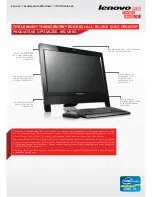
100
Chapter 4: Using Expressions and Pound Signs
<td>Order?</td>
<td>Product</td>
<td>Code</td>
<td>Quantity</td>
</tr>
<cfloop index="i" from="1" to="#cartItems#">
<tr>
<cfset productName= "product_" & Cart[i].ID>
<cfset skuName= "sku_" & Cart[i].ID>
<cfset qtyname= "qty_" & Cart[i].ID>
<td><cfinput type="checkbox" name="itemID" value="#Cart[i].ID#"
checked>
</td>
<td><cfinput type="text" name="#productName#" value="#Cart[i].Name#"
passThrough = "readonly = 'True'"></td>
<td><cfinput type="text" name="#skuName#" value="#Cart[i].SKU#"
passThrough = "readonly = 'True'"></td>
<td><cfinput type="text" name="#qtyName#" value="#Cart[i].Qty#">
</td>
</tr>
</cfloop>
</table>
<input type="submit" name="submit" value="submit">
</cfform>
</body>
</html>
2
Save the page as ShoppingCartForm.cfm.
Reviewing the code
The following table describes the code:
Code
Description
<cfscript>
CartItems=4;
Cart = ArrayNew(1);
for ( i=1; i LE #cartItems#; i=i+1)
{
Cart[i]=StructNew();
Cart[i].ID=i;
Cart[i].Name="Product " & i;
Cart[i].SKU=i*100+(2*i*10)+(3*i);
Cart[i].Qty=3*i-2;
}
</cfscript>
Create a shopping cart as an array of structures,
with each structure containing the cart item ID,
product name, SKU number, and quantity ordered
for one item in the cart. Populate the shopping cart
by looping CartItems times and setting the structure
variables to arbitrary values based on the loop
counter. A real application would set the Name,
SKU, and Quantity values on other pages.
<cfform name="ShoppingCart"
action="ShoppingCartAction.cfm"
method="post">
<table>
<tr>
<td>Order?</td>
<td>Product</td>
<td>Code</td>
<td>Quantity</td>
</tr>
Start the form and its embedded table. When the
user clicks the submit button, post the form data to
the ShoppingCartAction.cfm page.
The table formats the form neatly. The first table
row contains the column headers. Each following
row has the data for one cart item.
Summary of Contents for COLDFUSION MX 61-DEVELOPING COLDFUSION MX
Page 1: ...Developing ColdFusion MX Applications...
Page 22: ...22 Contents...
Page 38: ......
Page 52: ...52 Chapter 2 Elements of CFML...
Page 162: ......
Page 218: ...218 Chapter 10 Writing and Calling User Defined Functions...
Page 250: ...250 Chapter 11 Building and Using ColdFusion Components...
Page 264: ...264 Chapter 12 Building Custom CFXAPI Tags...
Page 266: ......
Page 314: ...314 Chapter 14 Handling Errors...
Page 344: ...344 Chapter 15 Using Persistent Data and Locking...
Page 349: ...About user security 349...
Page 357: ...Security scenarios 357...
Page 370: ...370 Chapter 16 Securing Applications...
Page 388: ...388 Chapter 17 Developing Globalized Applications...
Page 408: ...408 Chapter 18 Debugging and Troubleshooting Applications...
Page 410: ......
Page 426: ...426 Chapter 19 Introduction to Databases and SQL...
Page 476: ...476 Chapter 22 Using Query of Queries...
Page 534: ...534 Chapter 24 Building a Search Interface...
Page 556: ...556 Chapter 25 Using Verity Search Expressions...
Page 558: ......
Page 582: ...582 Chapter 26 Retrieving and Formatting Data...
Page 668: ......
Page 734: ...734 Chapter 32 Using Web Services...
Page 760: ...760 Chapter 33 Integrating J2EE and Java Elements in CFML Applications...
Page 786: ...786 Chapter 34 Integrating COM and CORBA Objects in CFML Applications...
Page 788: ......
















































